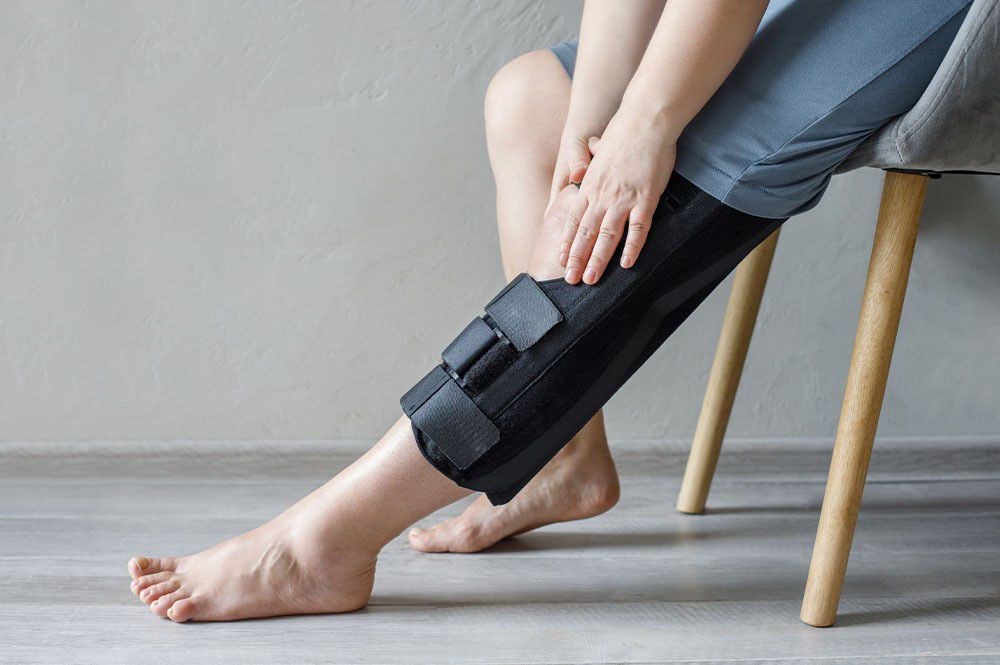Kinesiophobia Fear of movement: what is kinesiophobia?

- 1 The meaning
- 2 Why does that happen?
- 3 The role of physiotherapy
- 4 What to watch out for
- 5 The treatment
What is Kinesiophobia?
Kinesiophobia describes the excessive and irrational fear of exercise or physical activity, but fear of re-injury also plays an essential role in this context. In most cases, this fear, like many other fears, is perceived as very stressful by those affected.
The individual may experience limitations in their everyday life or have significant problems returning to their base level in sports.
After undergoing an operation or an accident, it is possible to experience difficulty moving or even fear it.
Reasons may include pain or limitation of movement, but what if the fear of movement persists?
The problem with this phobia lies in the fact that the perception of pain is so acute that it becomes a traumatic experience, and, as a result, the affected person begins to avoid performing the movement that caused the pain.
Behaving in this way is thought to prevent the pain from becoming chronic due to lack of mobility.
Unfortunately, fear of exercise is not uncommon; it is often underestimated or even accentuated by practitioners such as physicians, physical therapists, or exercise science graduates. Especially after an injury or operation, many affected people are afraid to move.
Some respect for movement is also beneficial in the beginning so that the injury heals well, but what if a fear develops from it that can last a long time?
Causes of Kinesiophobia
It is usual for a person to reduce their activity levels after suffering some injury-this is part of the body’s physiology.
Pain is the first sensation; this occurs as a defense mechanism of the body, signaling that one is in pain.
Nociceptors are responsible for capturing the pain stimulus and, after an injury, send a signal to the spinal cord and brain.
These signals are processed, and in response to this stimulus, a reflex mechanism occurs, such as withdrawing the hand from heat or paralysis of a limb caused by a cramp.
It is usual for people who have suffered an injury to limit their mobility, a phenomenon known as functional or avoidant immobility.
Pain causes all activities to stop, allowing the body to remain at rest as the body’s protective response.
The duration of this rest and immobilization of the body is critical, as this reduces inflammation in the injury and begins the tissue regeneration process, which usually occurs during the first 48 hours, also called the acute phase.
But if immobilization goes on for a long time, the tissues will begin to atrophy, and as a result, muscle mass will be lost, and the risk of the injury becoming chronic will increase. Similarly, immobility due to fear can cause a specific posture to be maintained, leading to stiffness and promoting the joints’ locking. In these cases, being able to identify such a disorder is crucial, as it will prevent the problem from lingering longer than necessary.
Phobia can occur at any age. The fear is triggered, for example, by a negative experience during physical activity, a traumatic injury, or another type of psychological stress. Affected people avoid any movement to protect themselves.
Studies have shown that some patients never return to their pre-injury level despite surgery and appropriate further treatment.
Fear of exercise manifests itself in various symptoms. These vary from person to person.
A scale including 17 aspects helps to measure the level of fear of exercise. It is a self-disclosure checklist filled out personally by the patient and helps assess the fear of moving or being injured again.
Kinesiophobia: what helps?
Patients who have had a traumatic experience with pain usually show a lot of apprehension about moving the limb, making its recovery difficult.
It is necessary to consult a physical therapist to treat kinesiophobia.
After experiencing a high level of pain, the patient will restrict their movements to avoid it.
As a result, some limitations arise due to the inability to perform specific movements, even affecting daily activities.
During the examination, the physical therapist will have to analyze the level of pain suffered by the patient in relation to the injury sustained and thus make the training appropriate for that person’s needs and pain levels. Not all people perceive pain in the same way, and if this fact is not considered, it is likely not possible to find an adequate solution to this problem.
If left untreated, the phobia can lead to severe problems, as fear of exercise leads to loss of fitness and, thus health.
The goal of treatment is to reduce anxiety and restore fitness levels. Various approaches exist to counteract kinesiophobia:
- Improved physical functioning of affected areas may be associated with reduced Kinesiophobia.
Kinesiophobia is related to self-perceived joint function. - Because of the above, physiotherapy is a suitable treatment approach. The goal is to strengthen the affected muscle groups and joints through targeted exercises. Likewise, body awareness is improved through physiotherapy training.
- Another approach is behavioral therapy. In this form of therapy, negative thoughts and fears are recognized.
Through therapy, patients can learn appropriate strategies to overcome the phobia. - Relaxation techniques can lead to improvement.
Kinesiophobia: factors to consider and complications
The most common symptom is avoidance behavior, where patients no longer perform certain movements, instead adopting an overall postural protective attitude. In the long term, this can lead to other physical complaints such as tension, joint stiffness, and muscle weakness.
Other symptoms include anxiety, which may manifest as tachycardia or increased sweating.
In extreme cases, it can even lead to panic attacks.
Pain is related to certain biopsychosocial factors, making them difficult to identify in an initial interview with the patient.
Many people experience pain in a traumatic way, so they may sometimes refuse to move the affected limb again, even minimally.
This is why patients need to be listened to. The specialist who does the sessions can help the recovery of the injury, bring the physiological process to an end and make the patient understand that pain and discomfort are part of recovery.
Manual techniques and some adapted exercises are usually used to treat kinesiophobia, so that the patient can trust the physical therapist and actively participate in the treatment, as the latter is essential for a good recovery.
Psychological therapy, along with physical therapy, is necessary to achieve a better outcome and for the patient to recover properly.
Nevertheless, there can be some complications if the phobia lasts for a long period, as it may seriously impair recovery from the injury.
As a result, the pain may be prolonged or, in the worst case, perpetuated, generating disability.
Some studies have linked kinesiophobia to other conditions, such as chronic low back pain, chronic fatigue, or complex regional pain syndrome.
Kinesiophobia: physiotherapy treatment
The main goal of treatment is to relieve symptoms and slow the progression of muscle hypotrophy due to lack of exercise.
Initial physiotherapy treatment performed by a professional should strengthen unaffected muscle groups and passively move affected muscle groups.
Muscles can be rebuilt through targeted workouts and intensive physiotherapy that include the help of electrostimulators.









